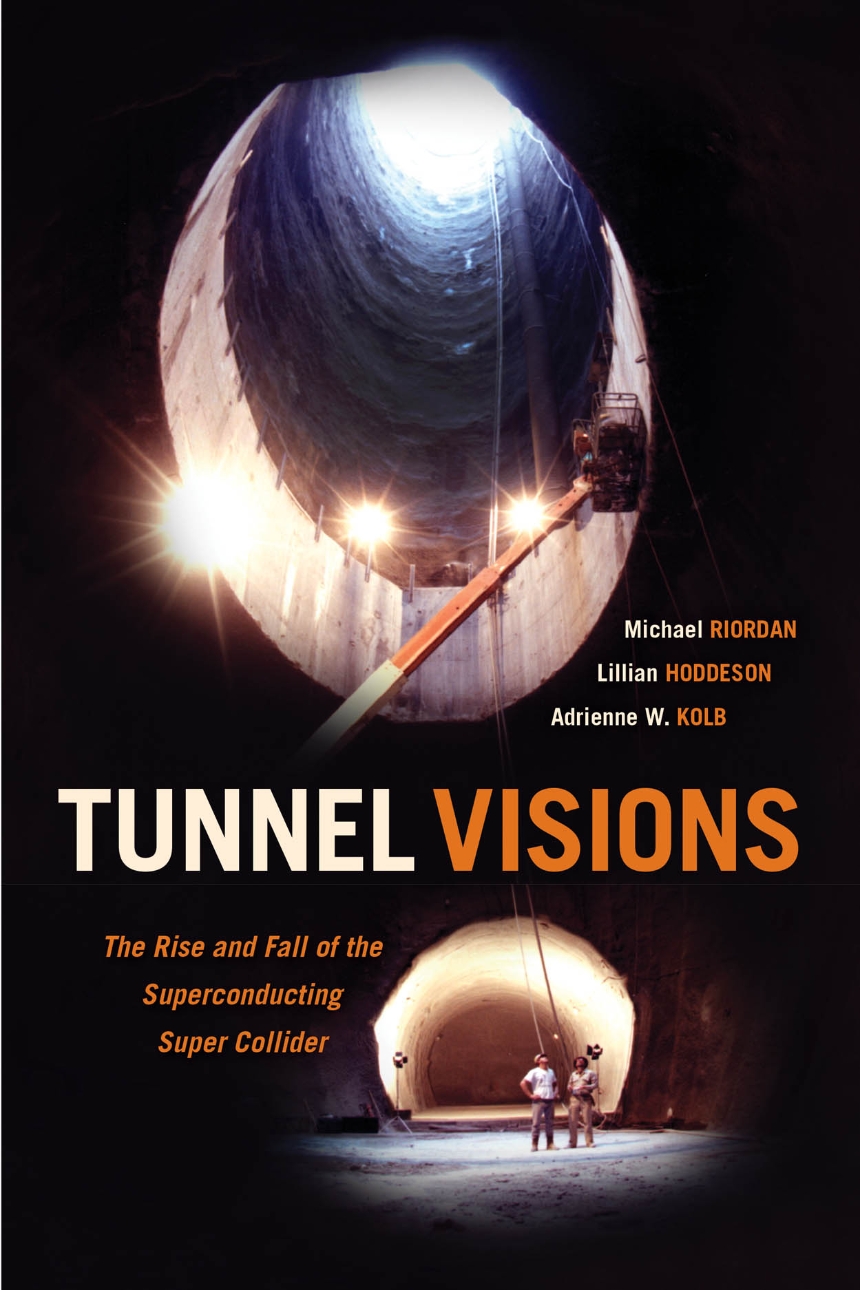Tunnel Visions
The Rise and Fall of the Superconducting Super Collider
9780226598901
9780226294797
9780226305837
Tunnel Visions
The Rise and Fall of the Superconducting Super Collider
Starting in the 1950s, US physicists dominated the search for elementary particles; aided by the association of this research with national security, they held this position for decades. In an effort to maintain their hegemony and track down the elusive Higgs boson, they convinced President Reagan and Congress to support construction of the multibillion-dollar Superconducting Super Collider project in Texas—the largest basic-science project ever attempted. But after the Cold War ended and the estimated SSC cost surpassed ten billion dollars, Congress terminated the project in October 1993.
Drawing on extensive archival research, contemporaneous press accounts, and over one hundred interviews with scientists, engineers, government officials, and others involved, Tunnel Visions tells the riveting story of the aborted SSC project. The authors examine the complex, interrelated causes for its demise, including problems of large-project management, continuing cost overruns, and lack of foreign contributions. In doing so, they ask whether Big Science has become too large and expensive, including whether academic scientists and their government overseers can effectively manage such an enormous undertaking.
Drawing on extensive archival research, contemporaneous press accounts, and over one hundred interviews with scientists, engineers, government officials, and others involved, Tunnel Visions tells the riveting story of the aborted SSC project. The authors examine the complex, interrelated causes for its demise, including problems of large-project management, continuing cost overruns, and lack of foreign contributions. In doing so, they ask whether Big Science has become too large and expensive, including whether academic scientists and their government overseers can effectively manage such an enormous undertaking.
480 pages | 47 halftones | 6 x 9 | © 2015
History: American History, History of Technology
Physical Sciences: History and Philosophy of Physical Sciences, Physics and Astronomy
Reviews
Table of Contents
Preface
Chapter 1 Origins of the Super Collider
Chapter 2 A New Frontier Outpost, 1983–88
Chapter 3 Selling the Super Collider, 1983–88
Chapter 4 Settling in Texas, 1989–91
Chapter 5 Washington and the World, 1989–92
Chapter 6 The Demise of the SSC, 1991–1994
Chapter 7 Reactions, Recovery, and Analysis
Epilogue The Higgs Boson Discovery
Appendix 1. Physics at the TeV Energy Scale
Appendix 2. List of Interviews
Acknowledgments
Bibliography
Index
Chapter 1 Origins of the Super Collider
Chapter 2 A New Frontier Outpost, 1983–88
Chapter 3 Selling the Super Collider, 1983–88
Chapter 4 Settling in Texas, 1989–91
Chapter 5 Washington and the World, 1989–92
Chapter 6 The Demise of the SSC, 1991–1994
Chapter 7 Reactions, Recovery, and Analysis
Epilogue The Higgs Boson Discovery
Appendix 1. Physics at the TeV Energy Scale
Appendix 2. List of Interviews
Acknowledgments
Bibliography
Index
